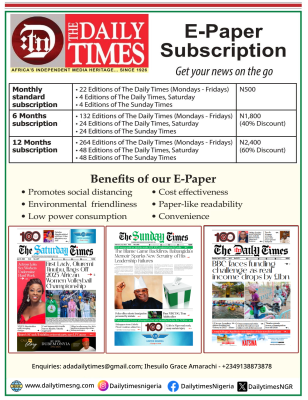Yellow Fever: WHO to vaccinate one billion people in 27 high risk African countries

The World Health Organisation, WHO has said that nearly one billion people will be vaccinated against yellow fever in 27 high-risk African countries by 2026 with the support from WHO, UNICEF, Gavi (the vaccine Alliance) and other health partners.
The WHO Director-General, Dr. Tedros Adhanom Ghebreyesus who disclosed this during a regional meeting with the Minister of Health, Prof. Isaac Adewole, Gavi the Vaccine Alliance, UNICEF and more than 50 health partners noted that the commitment was part of its move to Eliminate Yellow fever Epidemics (EYE) in Africa strategy, which he launched.
Lamenting that the world is facing an increased risk of Yellow fever outbreaks and that Africa is particularly the most vulnerable, Ghebreyesus said that with just one injection, ones life will be protected against the dangerous pathogen.
He said, “This unprecedented commitment by countries will ensure that by 2026 Africa is free of Yellow fever epidemics.
He added that during the EYE meeting, representatives from key African countries, WHO, UNICEF, Gavi, and other partners will develop roadmap on how to roll out the EYE strategy at the national level.
For his part, Dr. Seth Berkeley, CEO of Gavi, the Vaccine Alliance, said the comprehensive global strategy offers an unprecedented opportunity to end the devastating yellow fever epidemics that periodically impact Africa.
According to him, they will ensure that the most vulnerable communities have access to the vaccine through routine systems plays a central role in making this happen.
He said, “ensuring that the most vulnerable communities have access to the vaccine through routine systems plays a central role in making this happen.
Vaccine manufacturers and Gavi partners have worked hard to improve the global vaccine supply situation in recent years to make sure there is enough vaccine to respond to outbreaks, allow preventive campaigns and that routine immunisation functions at full capacity”.
Also, the UNICEF’s Chief of Health, Mr. Stefan Peterson, said UNICEF would make vaccines available, advocate for greater political commitment as well as provide support in vaccinating children through routine immunisation as well as during outbreaks of the disease.
“Today, the threat of yellow fever looms larger than ever before, especially for thousands of children across Africa.
“Given that almost half of the people to be vaccinated are children under 15 years of age, this campaign is critical to saving children’s lives, and would go a long way toward stamping out this disease,” Peterson said.
He said Brazil is currently battling its worst outbreak of Yellow fever in decades with more than 1,000 confirmed cases.
He noted that the ease and speed of population movements, rapid urbanisation and a resurgence of mosquitoes due to global warming have significantly increased the risk of urban outbreaks with international spread.
“Experience in West Africa demonstrates that the EYE strategy can work. When Yellow fever re-emerged as a public health issue in the early 2000s, countries in the region controlled the epidemics through preventive mass campaigns combined with routine immunisation,” Peterson added.
Stefan also said no yellow fever epidemics have been recorded since in countries which successfully implemented this approach.
Earlier, the Minister of Health, Professor Isaac Adewole stressed the need to establish Yellow fever laboratory in Nigeria.
According to the Minister, the federal government target 21 million Nigerians to be immunized against yellow fever.
He added that since 2004, Nigeria recorded 1,604 out of which 115 was confirmed in Nigeria, 41 in Dakar, the remaining cases could not be confirmed due to transportation.








